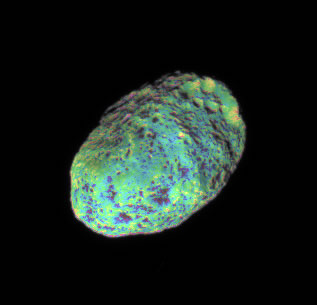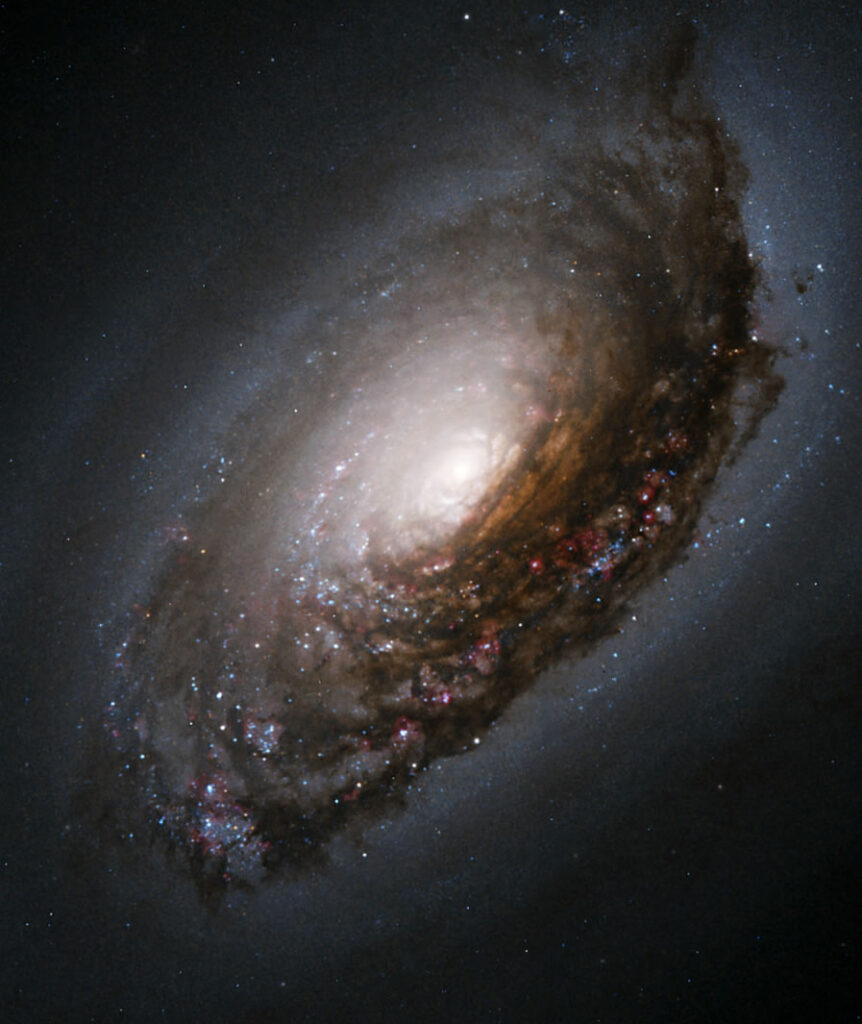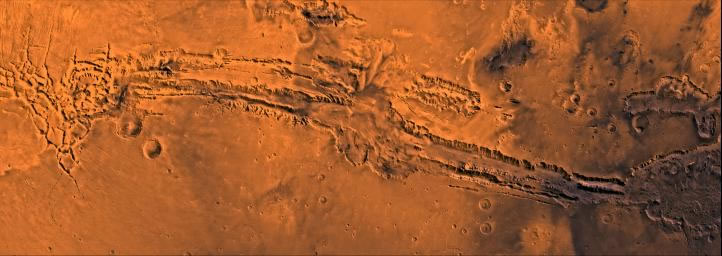Introduction: Guess What It Is . . .
This program is about how big our Universe is.
Before tackling something that big, let’s look at a few things that are a bit smaller and see if we can guess what they are and how big they are.
DIGITAL EFFECT: Go to Night
Fast forward time until about 90 minutes past sunset.
For each of images 1-5, show the image without any text/caption that indicates the size and ask these questions:
“What is it?”
“Is it big or small?
“Is it close up or far away?”
…then add the text/caption after some guesses have been made.
VISUAL 1 (still): Hyperion, Saturn’s Moon, 235 Miles Across (Cassini Mission)

DIGITAL EFFECT: Hyperion Caption
Fade on text on the dome, giving size of Hyperion as 410 km (255 mi) long.
VISUAL 2 (still): HIV Viruses, about 1 Micron Across

DIGITAL EFFECT: HIV Caption
Fade on text on the dome, giving size of corona virus: 0.01 microns = 1/100,000 millimeter or about 10,000 times smaller than the width of a human hair.
VISUAL 3 (still): M64, Spiral Galaxy, 40,000 Lightyears Across

DIGITAL EFFECT: M64 Caption
Fade on text on the dome, giving size of M64: a galaxy of containing hundreds of billions of stars; about 53,000 light-years across. You can tell the audience that they’ll be learning more about what a light year is later in this show, but suffice it to say for now that one light-year is trillions of kilometers (trillions of miles)
VISUAL 4 (still): Valles Marineris Canyon on Mars (Viking Mission)

DIGITAL EFFECT: Valles Marineris Caption
Fade on text on the dome, giving size of Valles Marineris: about 4000 km (2500 mi) or nearly the distance across the United States from New York City to San Francisco.
VISUAL 5 (still): Tree Bark
Fades on a still image of a closeup of tree bark.

DIGITAL EFFECT: Tree Bark Caption
Fade on text on the dome, giving the width of this photo of tree bark: about 50 cm (~20 inches).
After a short discussion, tell the students what they are looking at.
Fade off all images and text.

